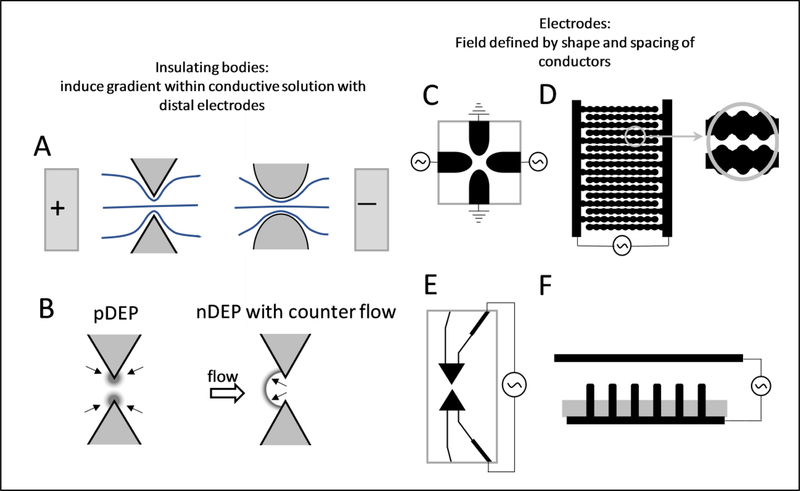Figure 1.
Schematic representations of various forms of dielectrophoresis experimental platforms used to manipulate proteins. A) Insulator-based dielectrophoresis where the electric field gradient (represented by the relative closeness of the electric field lines (blue)) is induced by constricting the conductive solution using structural elements (of a variety of shapes and spacings, two general classes shown) and the electrodes are at a distance. See Table 1, section ‘iDEP’ for specific realizations. B) Insulator-based system can induce positive (pDEP) and negative (nDEP) dielectrophoresis, where pDEP (left) causes the proteins to be attracted to the higher electric field gradient and nDEP (right) to the lower areas. The nDEP is commonly set to oppose one or more forces (flow, Coulombic). C) Quadrupole electrode-based (eDEP) system, where pDEP induces movement to the electrodes (black) and nDEP towards the center of the structure within the solution.[9] D) Sinusoidally corrugated electrodes used in the original 1994 eDEP work led by Washizu.[7] E) Highly refined, small radius of curvature electrodes used for capture of single molecules in the works of Hölzel.[11] F) Nanometer sized array of electrodes used to capture protein in the work of Laux from the Hölzel laboratory.[55]

